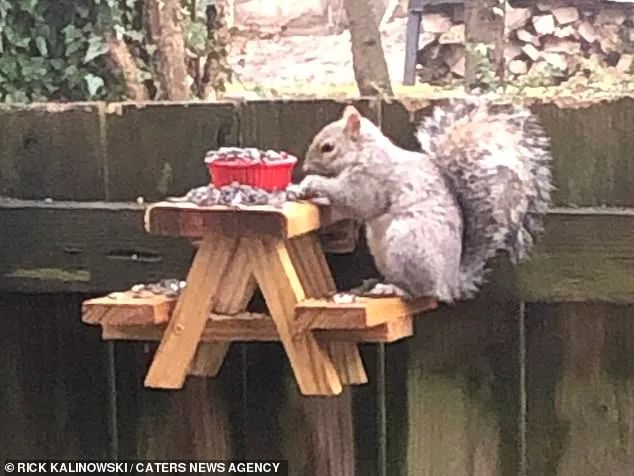Spring is in the Air - Activities for Children at Home
Despite the challenges we all face, spring is here and it is beautiful! We want our children to stay in touch with nature, and to continue their observation and awe of the cycles of life. I saw on the news that some people are building tiny furniture and putting out treats for squirrels to have their own picnic! I’m sure the family that was creative enough to build this table got a kick out of seeing the squirrel in their back yard.

As I am busily preparing with our faculty to broadcast our residencies this summer, my dear friend, Helene Rosenberg, submitted some great ideas for spring activities that you can do at home. She does many of these with her own class in online sessions, and I added a few of my favorites as well. We divided them into the four major avenues of Montessori.
Practical Life
Spring cleaning:

- Spring cleaning is on the minds of many people. Include your children in some simple activities. In addition to getting the job done, it will help them feel more included.
- Provide small tools or utensils whenever possible. Show the child how to do the action, then have him do it when needed or just for fun.Sensorial
Smell and taste test:
- Prepare a plate with an orange slice (sweet), a lemon slice (sour), pretzels/crackers (salty), horseradish (bitter), pepper (spicy), and/or cinnamon (savory).
- Cover the plate before the lesson begins.
- Offer a blindfold (as long as child is not afraid).
Introduce the five senses:
- Ask the children what they can see, hear, smell, feel and taste outside that reminds them that we are in the season of spring. Examples are seeing buds sprout, hearing birds chirp, smelling cut grass, feeling warm air, eating food from a barbeque, etc.
- Explain to the children that they will be scientists for the day! We will perform a series of taste tests.
- The children may use the blindfold to smell the food before tasting it and then guess, or make a prediction or hypothesis (an educated guess) on the type of food it is.

Language
- Have a snack and scavenger hunt for household objects that start with the letter sound of the day; for example, “M” for Monday – mango, macaroni, map. On another week, try objects that start with a certain letter; for example, “L” – lemonade, lollipop.
- Describe the parts of a butterfly using their vocabulary: forewing, antenna, head, hindwing, abdomen, and thorax.

3. Describe the life cycle of a butterfly using the vocabulary: larva (caterpillar), pupa (chrysalis), and adult butterfly. Check online and you can find downloadable cards like those below for butterflies and frogs.


- Use recycled egg cartons, paper and crayons to make and color caterpillars and butterflies.
- Make sure to add vocabulary to everything you do.
- Children in the 3-6 age group love words.
- Older children in elementary school are unexpectedly interested in where words came from.
- Children in the 3-6 age group love words.
- Older children in elementary school are unexpectedly interested in where words came from.
Math
- Make a necklace using a long piece of string or yarn and uncooked tube pasta of varying colors, if possible, for stringing. Then count the number of pieces of pasta on the necklaces.
- For older children, count the number of noodles of each color and add them together.

3. Practice estimation using jellybeans in a jar or bowl.
-
- Start with a small number of items.
- Let the child estimate the number of jellybeans. Then count them or, if the child can count, let her do it.
- After the child can count and is successful at estimating, increase the number of items.
- Start with a small number of items.
- Let the child estimate the number of jellybeans. Then count them or, if the child can count, let her do it.
- After the child can count and is successful at estimating, increase the number of items.

Enjoy these activities!
Be happy and well.






















